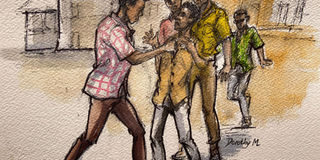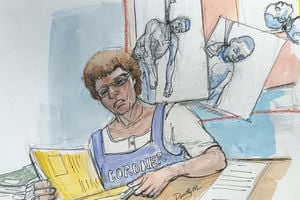
Abdaifatah, a young man of Somali origin, was stabbed on the left side of the chest on the evening of June 24, 2013, when he intervened to rescue a youth, who was in the process of being robbed of a mobile phone in the Kenyan capital of Nairobi. Later that evening he was pronounced dead at the Aga Khan Hospital where he had been rushed for treatment. The cause of death was established as a stab wound in the chest caused by a sharp object and the mechanism of death as excessive bleeding. In the course of the investigations the murder weapon was, however, not recovered
Abdulahi Mohamed, another young man, also of Somali origin, was arrested and charged with murder of Abdaifatah. He denied the charges and in his defence he stated that on the day and time in question he saw some youth fighting and that he recognised the deceased as one of the people engaged in the fighting. According to him he decided to go and assist his friend, now deceased, whom he held and pulled out of the fight. He said that upon pulling him, he noticed that his friend, Abdaifatah, was bleeding from the left chest and that the deceased told him that he had been stabbed during the fight by some other youth. To him by the time he came to the scene, the deceased had already been injured. He told court that the deceased was his friend of four years and that during the incident he was helping his friend.
The prosecution produced two eye witnesses of the incident and the two were friends of the deceased who were with him that evening. Their evidence was to the effect that they were with the deceased that evening going for supper when they came across a group of four people. Three of the four, identified as youths, were accosting the fourth one, trying to rob him of his mobile phone. The victim of the robbery called to the deceased by name and in the Somali language requested him for help. It is when the deceased went to the aid of the victim that Abdulahi Mohamed turned and stabbed him once in the chest.
To court one of the cardinal issues to determine was whether the accused had been properly identified as the one who stabbed the deceased. It has been held in law that the evidence of identification must be reliable and free from the possibility of error so as to form a secure basis for conviction. Evidence of visual identification in criminal cases can bring about miscarriage of justice and it is of vital importance that such evidence is examined carefully to minimize this danger. Whenever the case against an accused depends wholly on the correctness of one or more identifications of the accused which he alleges to be mistaken, court must warn itself of the special need for caution before convicting the accused.
One of the two witnesses told court that he had known the accused before this incident, having met him at the local mosque since 2009. The incident in question took place in 2013, a period of four years since the witness started seeing the accused. The witness told court that he not only knew the accused by facial appearance but also by his nick name “Arab”. The accused also admitted to knowing the witness before the incidence.
The second witness told court that at the time of the incident the street lights were on and that a shop near the scene of incident had bright tube bulbs on. He stated that on both sides of the road there were many shops with their lights on and that one could clearly see any person on the street that time and that that they clearly observed what happened that evening. He also said he, together with the deceased, had met with the accused one week before the incidence and the accused had greeted the deceased with a lot of familiarity.
Court considered the evidence of the two witnesses and the defense of the accused in regard to the conditions of lighting at the scene of incident and was satisfied that the conditions were good for positive identification. Although the natural light was poor the other sources of lighting from electric bulbs in the shops nearby enabled a positive identification at the time of incident. The accused in his defense admitted as much. Court was, however, of the view that an identification parade should have been organized for the witnesses to identify the accused as they both claimed to have known him before the incidence. Court, nevertheless, found corroboration in the evidence of the two witnesses.
The accused claims that when he pulled the deceased from the fight he was involved in he noted some bleeding on the chest of the deceased. He claimed that the deceased was okay and that the deceased even claimed that he did not require to be treated. To court the accused in his defense, therefore, admitted part of the facts of the prosecution case. He admitted that he was at the scene at the time of the incident. He also admitted that the conditions of light at the scene were as described by the two prosecution witnesses. He admitted that it was about 6:30 pm and that even though it was beginning to be dark, it was not so dark to prevent someone to identify another. He admitted that there were other sources of light from the electric lights from nearby shops that illuminated the place.
The second prosecution witness told court that he remained at the scene after the Abdaifatah was attacked and that soon after the attack he was unconscious and therefore in a critical condition and was rushed to see a doctor immediately after the attack. Less than an hour later he was pronounced dead. Court was, therefore, of the opinion that when the accused claimed that Abdaifatah was okay after the attack and spoke to him assuring him that he did need to hospital was far from the truth.
Court was satisfied that the prosecution had adduced sufficient evidence to prove that the accused was at the scene of the robbery and that he stabbed the deceased to prevent him from assisting the victim of the robbery. To court the defense of the accused was a mere denial and that his relationship with the deceased was friendly was not true.
To be continued…








